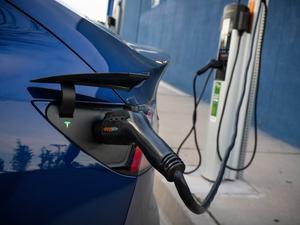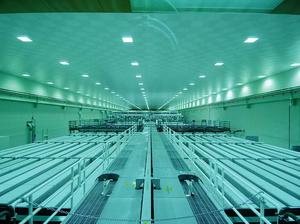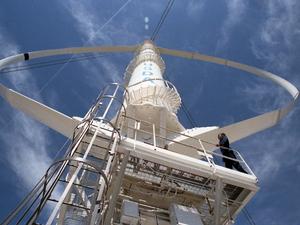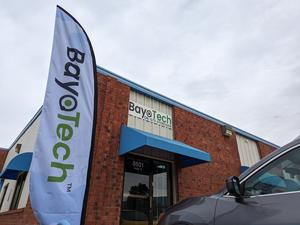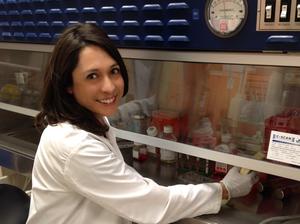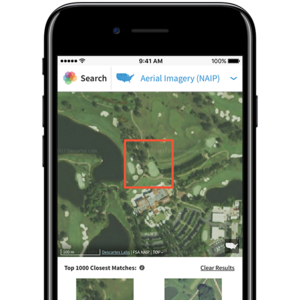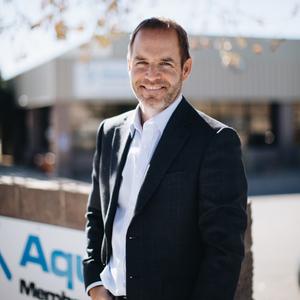For more than two decades, researchers have tried to achieve what’s known as “fusion ignition.”
It's a phenomenon where more energy from a fusion reaction is generated than was put in. On Dec. 13, representatives from several organizations, including the U.S. Department of Energy, announced that scientists at California's Lawrence Livermore National Laboratory (LLNL) had achieved ignition — what many had thought was nearly impossible. And, they did it with the help of a few New Mexico labs.
"I actually never thought the day would come — and it's just incredible that it's here," said Michael Cuneo, a senior manager for pulsed power science and technology at Sandia National Laboratories. "[To understand] the technical accomplishment, you really have to have been in the field for 30 years to know. We've all been waiting for this day."
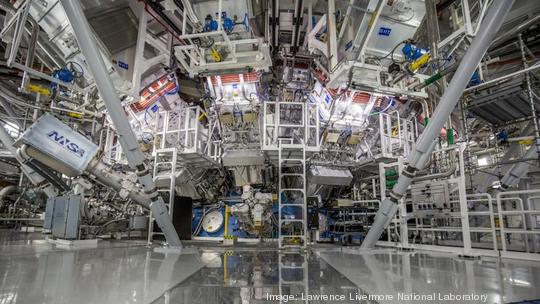
Scientific synergy
Sandia helped develop different parts and diagnostics that the team at LLNL used to achieve fusion ignition at the National Ignition Facility (NIF), Cuneo said. It did this using its own fusion reaction facility, called the Z Pulsed Power Facility.
The facility uses what it calls the "Z machine." The machine creates fusion reactions differently than NIF.
While NIF uses lasers to compress a target and create high pressure that leads to a fusion reaction, Sandia's Z machine creates large magnetic currents that "squeeze metal cylinders and create really high pressures," Cuneo said.
It's what Cuneo called a "complementary process." Although the Sandia facility, which is run by a staff of around 200 people, doesn't use the same physics, its test results can still complement the research being done at the NIF in California.
Los Alamos National Laboratory (LANL) was also among LLNL's collaborating institutions. The northern New Mexico lab provided several diagnostics that offered data on the quality of the implosion reaction used at NIF, a spokesperson from the lab said in a Dec. 16 email to Albuquerque Business First.
"The achievement of ignition on NIF is one of the most exciting developments in my entire career," said Associate Laboratory Director for Weapons Physics at LANL, Charlie Nakhleh, in the email. "It opens up whole new avenues of laboratory investigation into high-energy-density phenomena that were previously inaccessible. It is a tremendous triumph of expertise, ingenuity and perseverance."
One of the major questions that has cropped up following the fusion ignition announcement is whether fusion reactions could become a viable source of clean energy generation. That may be far off, Cuneo, the manager at Sandia, said.
That's partly because the current research facilities "are not designed for fusion energy," Cuneo said. They're what he called "single-shot facilities" that are capable of running individual tests. They aren't built to generate the high frequency of fusion reactions needed to get the yields necessary for fusion energy.
"We need to get to what's called high yield, which is 100 times the yield that NIF got," he said. "That's the yield you need to make fusion energy possible.
"So, there's still a lot of research left to do to figure out how to increase the yields," Cuneo continued. "But now that it's possible to get ignition, all of the research and all of the money that's been invested was really worth it. It means that now, you have a proof that you can go further – and it's worth going further. And it should start to open up the floodgates for some more fusion energy research."

Public-private partnerships
While labs like Sandia and Los Alamos will drive fusion research, it's private companies that will be the ones to deploy fusion energy in the future, said Santa Fe-based physicist Simon Woodruff, Ph.D.
"There is a very clear structure for pursuing economic fusion energy, and it's called a public-private partnership," Woodruff said. "The private company leads and then it brings into the mix other capable organizations. It brings in the national labs, it brings academia, it brings other small companies. But the structure is that the private fusion company leads it."
Woodruff moved his company, Woodruff Scientific Inc., to Santa Fe in 2017. The company builds the complex technical parts used in fusion research and development.
"We're supplying the picks and the shovels to go to the pickers," said Woodruff, who researched fusion through a doctorate program at the University of Manchester.
There are around 30 private fusion companies in different parts of the country, like the Bay Area, some of which Woodruff Scientific supplies parts to, he said. Woodruff wants to see the fusion infrastructure in New Mexico grow.
"I say that [fusion companies] often spring up around universities and national labs," Woodruff said. "We see two great national labs and great universities in New Mexico, so I don't see any reason why [companies] shouldn't set up here."
Woodruff compared New Mexico's potential for bringing in fusion companies to the state's development of the aerospace industry.
"It'd be the same way that the space program has a base in New Mexico and attracted Virgin Galactic," he said. "There's no reason why there can't be somewhere where there could be a big fusion focus."
How can the two major New Mexico labs help private companies make fusion energy viable?
"The labs de-risk things," Woodruff said. "They take out technical risk and provide expertise that the private companies can use."
The Department of Energy in September announced up to $50 million for a public-private partnership program to support companies in developing fusion pilot plants. The plants would help bring fusion toward "technical and commercial viability," according to the DOE's website.
And Woodruff said that his company wants to build a "big facility" in 2024 that would "service the fusion industry." He wants to build it at a state community college to "train up youngsters and give them opportunities within this growing industry," he said.
"There's no two ways about it, New Mexico is fantastic place to set up a fusion company," Woodruff said. "There's no reason why there shouldn't be a small cluster of fusion companies in New Mexico."
